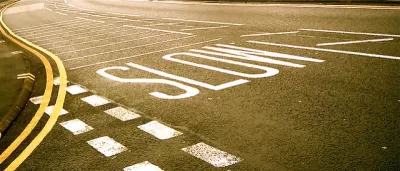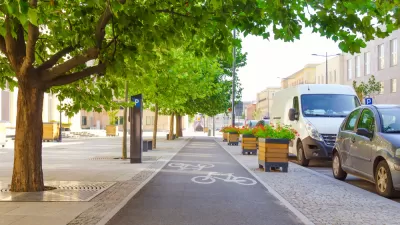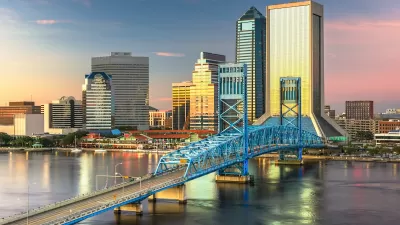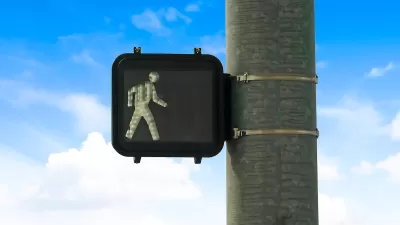While other countries are seeing fewer road deaths, traffic violence in the United States is back on the rise.

The rate of Americans dying in traffic crashes far outpaces that of most other developed nations, reports David Zipper for Bloomberg CityLab, begging the question: why?
While many Americans attribute the higher rate of road deaths to our reliance on cars, Zipper argues that, based on his extensive research on the topic, “The closer you look, the clearer it becomes that the US traffic safety crisis is not a reflection of geography or culture,” but rather of conscious policy decisions that privilege fast car travel and carmakers over road safety and multimodal transportation.
According to Zipper, this phenomenon took off more recently. In the 1970s and 1980s, the United States could claim to be a leader in road safety as innovations such as seatbelts and airbags became mandatory. “But in the last 30 years, the US has not kept pace with tumbling traffic death rates in Europe, east Asia and Canada. In 2021, as the US hit a 16-year high for fatalities, Japan and Norway posted the lowest number of road deaths since the 1940s.” Pedestrian death rates in the United States rose at even more alarming rates.
Zipper attributes this to a variety of factors, including the rise of car-free and ‘car-light’ zones in European cities, as well as the use of automatic traffic cameras and other safety improvements like road diets and roundabouts. Regulations on vehicle design play a role, too: “The European Union added pedestrian safety tests to NCAP crash ratings over two decades ago, and Japan, China and Australia now conduct them as well. The US still does not.” Other factors include comparatively low fuel taxes in the United States, land use patterns that encourage driving, and poorly resourced public transit systems.
Zipper suggests that the easiest solutions are the simplest. There’s no need to wait for technology to save us. Proven, analog tools for slowing traffic and prioritizing pedestrian safety already exist.
FULL STORY: US Traffic Safety Is Getting Worse, While Other Countries Improve

Montreal Mall to Become 6,000 Housing Units
Place Versailles will be transformed into a mixed-use complex over the next 25 years.

Planetizen Federal Action Tracker
A weekly monitor of how Trump’s orders and actions are impacting planners and planning in America.

California High-Speed Rail's Plan to Right Itself
The railroad's new CEO thinks he can get the project back on track. The stars will need to align this summer.

Nevada Legislature Unanimously Passes Regional Rail Bill
If signed by the governor, the bill will create a task force aimed at developing a regional passenger rail system.

How Infrastructure Shapes Public Trust
A city engineer argues that planners must go beyond code compliance to ensure public infrastructure is truly accessible to all users.

Photos: In Over a Dozen Cities, Housing Activists Connect HUD Cuts and Local Issues
We share images from six of the cities around the country where members of three national organizing networks took action on May 20 to protest cuts to federal housing funding and lift up local solutions.
Urban Design for Planners 1: Software Tools
This six-course series explores essential urban design concepts using open source software and equips planners with the tools they need to participate fully in the urban design process.
Planning for Universal Design
Learn the tools for implementing Universal Design in planning regulations.
City of Camden Redevelopment Agency
City of Astoria
Transportation Research & Education Center (TREC) at Portland State University
Municipality of Princeton (NJ)
Regional Transportation Commission of Southern Nevada





























